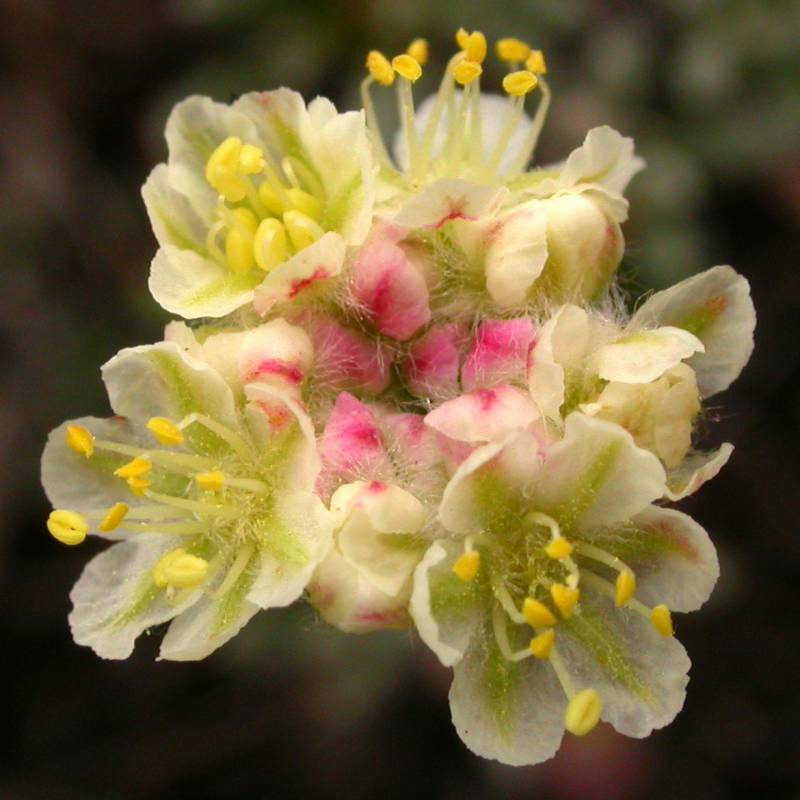Eriogonum thymoides
Eriogonum ovalifolium
thyme buckwheat, thyme-leaf wild buckwheat
cushion buckwheat, oval-leaved eriogonum
Leaves many, linear to linear-spatulate, 3-10 mm. long, usually revolute, somewhat wooly beneath and silky above.
All basal, white-woolly on both surfaces to somewhat green on the upper surface, spatulate (less than 1 cm. long, without a petiole) to elliptic to rhombic to oblanceolate, the blades 5-20 mm. long and 3-15 mm. broad on petioles 1-3 times as long as the blades. In Washington, it is primarily a sub-alpine species, with white-woolly leaves about 1.5 cm. long and broadly elliptic.
Flowering stems 3-8 cm. tall, always with a whorl of leaves about mid-length;
involucres single and terminal, top-shaped, 3-5 mm. long, the teeth 6-8, erect, triangular, 1 mm. long;
perianth with a stipitate base 0.5-1 mm. long, densely hairy, the 6 segments obovate, yellow or white to rose-red, 4-6 mm. long; plants dioecious, the staminate flowers with 9 stamens, the filaments hairs only at the base, the pistillate flowers with stout, spreading styles 0.5-1 mm. long.
The inflorescence is a capitate cluster of several involucres, 1-3.5 cm. broad, subtended by 3 or more narrow bracts, on leafless stems 3-20 cm. tall. Involucres narrowly cup-shaped, 3-5 mm. long, with 5 lanceolate, erect teeth;
tepals usually cream to rosy-pink, the segments free nearly to the base, which is not stipe-like, the outer ones oblong and nearly twice as wide as the inner segments.
Achenes pubescent above
Eriogonum thymoides
Eriogonum ovalifolium
- Local floras:
BC,
CA,
OR,
WA
- Local Web sites:
CalFlora,
CalPhotos,
Flora NW,
PNW Herbaria
WildflowerSearch
iNaturalist (observations)
USDA Plants Database
- LBJ Wildflower Center
- SEINet
- Plants of the World Online
- Encyclopedia of Life
- Wikipedia
- Google Image Search



